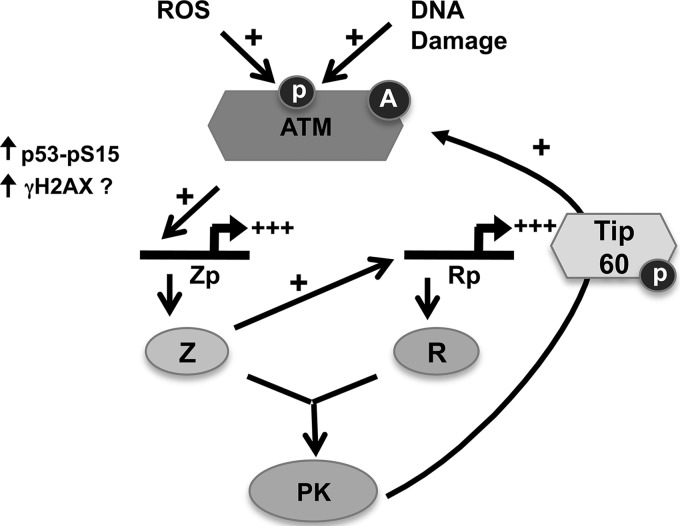Fig 9.
Hypothesized model by which ATM contributes to lytic EBV reactivation. Cellular stresses such as DNA damage and reactive oxygen species (ROS) induce ATM activation. ATM then activates the EBV immediate-early promoter, Zp, through effects on viral chromatin structure (for example, by enhancing KAP1 and/or H2AX phosphorylation) and/or by increasing p53 transcriptional function. Induction of Zp activity leads to expression of the Z IE protein, which results in R expression. Z and R induce transcription of the early lytic viral proteins, including the EBV-encoded protein kinase (PK), which then further activates ATM activity through phosphorylation of Tip60. Viral DNA replication, which occurs downstream of Z and R activation, may further activate ATM (data not shown).

